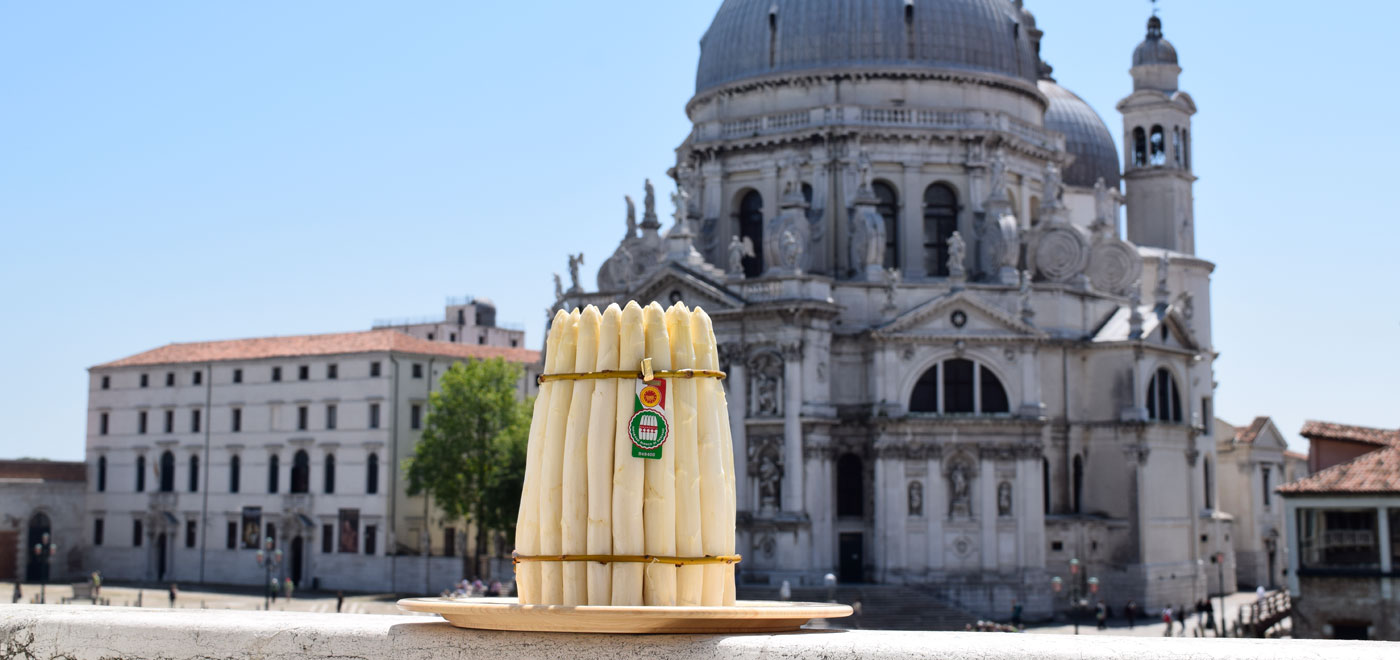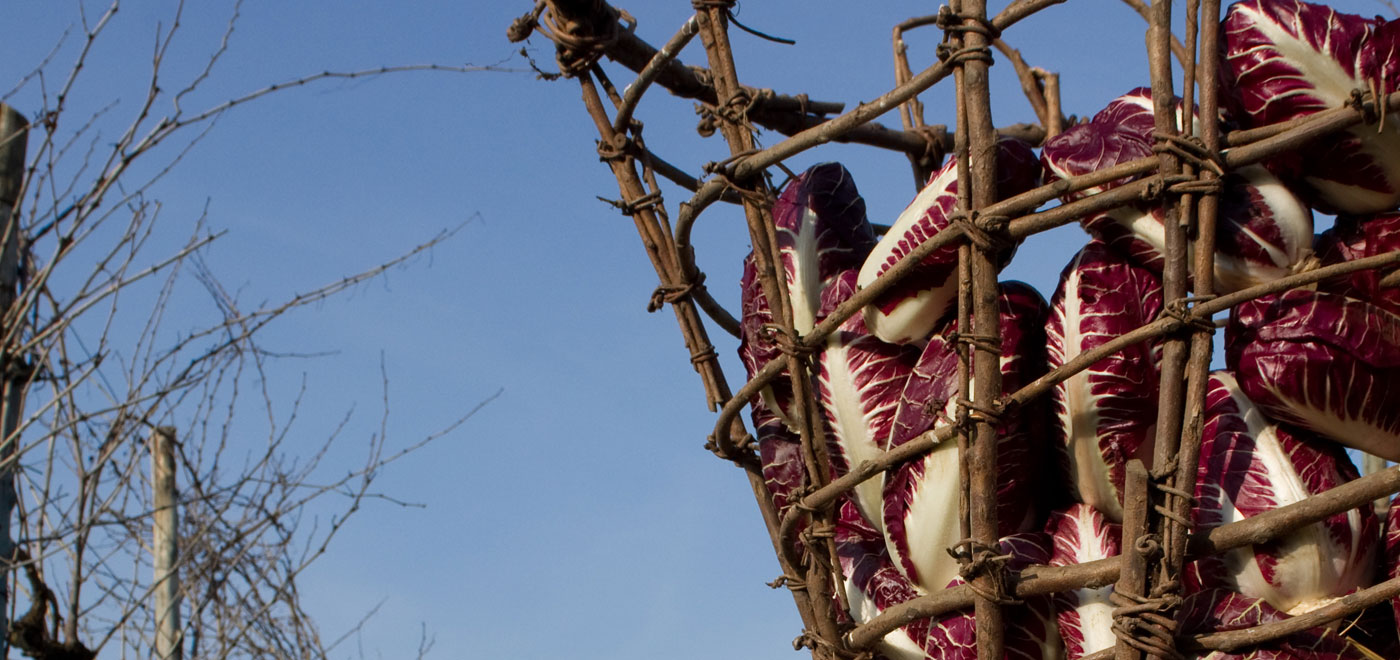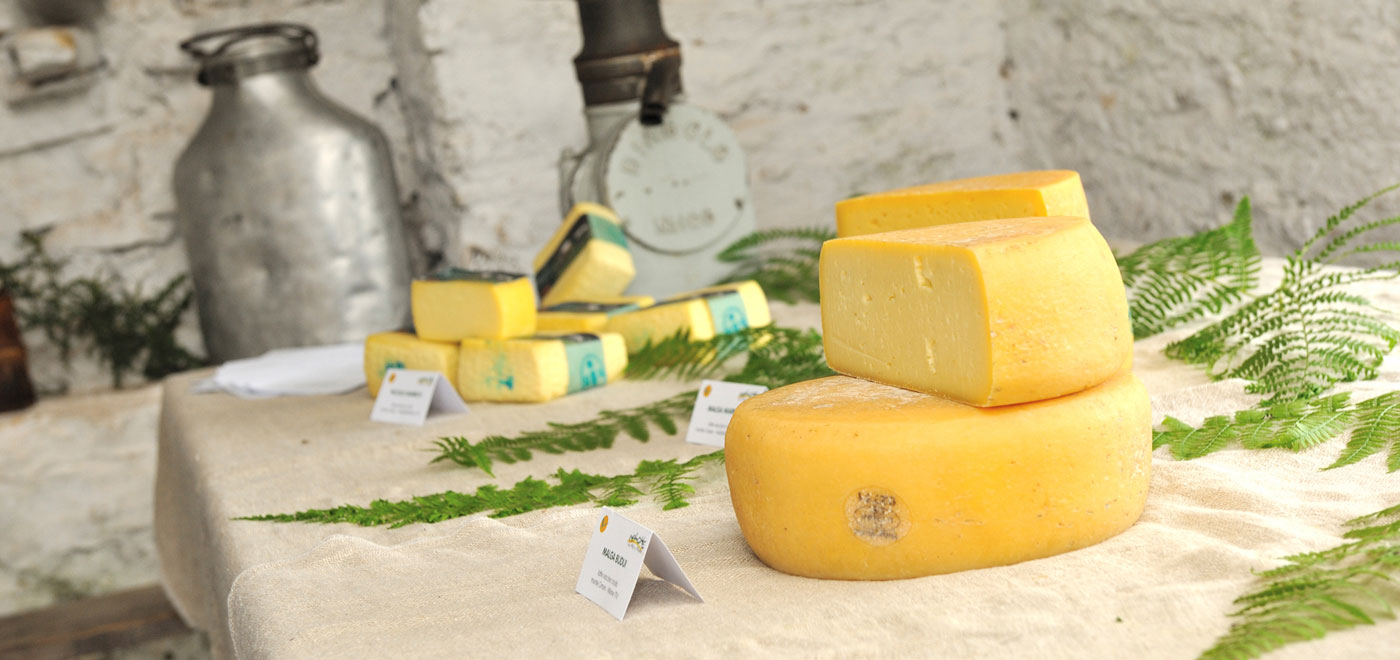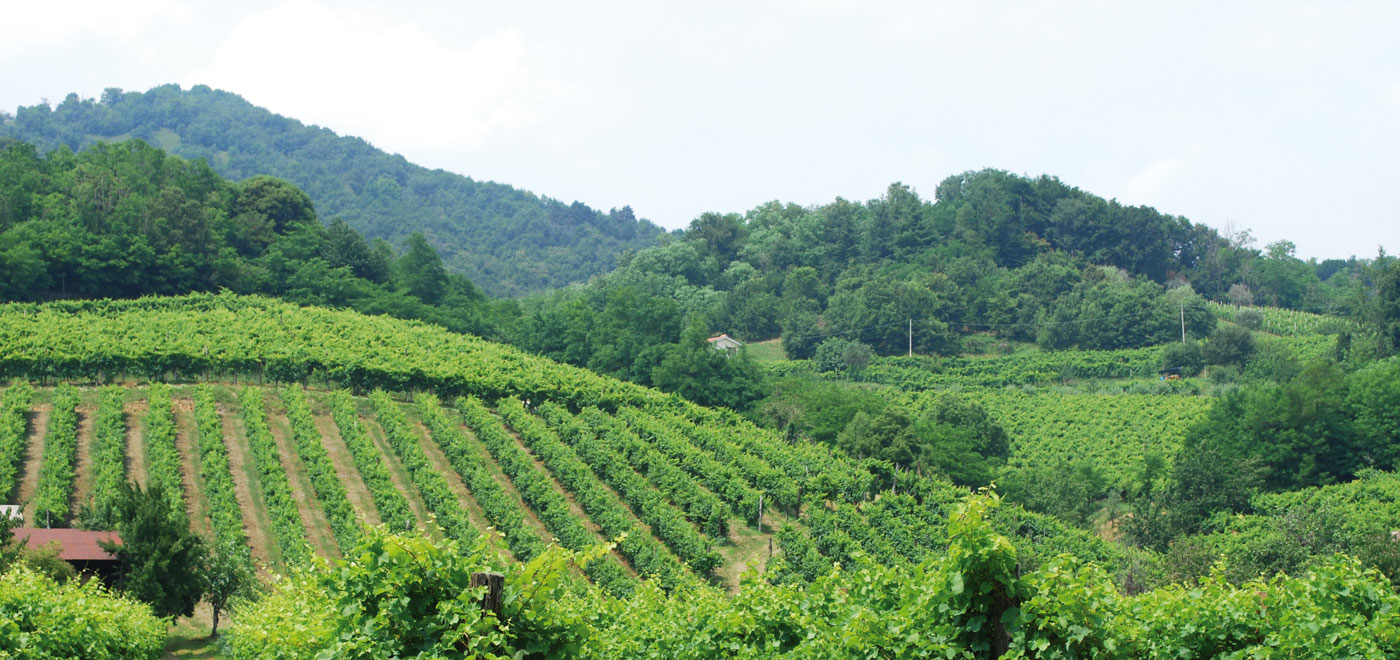Mount Grappa: food and typical products of the area
Locally grown delicacies: the food and wines of the area of Mount Grappa offer countless delicacies to all kinds of palates. Starting from the fruits of the earth, it is worth to mention: the White Asparagus of Bassano DOP, the Radicchio of Treviso IGP, the Cherries of Marostica IGP, but also the Apples of Monfumo, the Chestnut IGP of Monfenera and the sweet Biso (pea) of Borso. The area abounds of traditional specialties such as Grappa’s cheeses (Morlacco and Bastardo), extra virgin olive oil obtained from the olives that flourish in the local mild climate, and finally the famous Sopressa (local salami) and sausages. To match the food there is a wide winery selection spacing from the famous Prosecco DOCG in the area of Valdobbiadene and Conegliano, the wines of Colli Asolani and Montello and those of the hills of Breganze. Finally, you can find digestives with excellent taste like Grappa, whose traditional production has made Bassano famous worldwide.
-
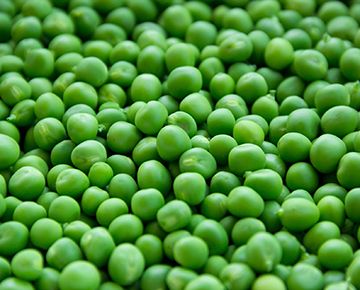
Biso di Borso
Biso di Borso
Peas of the family of Pisum Sativum L.
Variety: Nano, Rondo, Progress 9, Star 9.Product Description: Characterized by its gentle sweetness and delicate flavor.
Area of production: Foothills area near Borso del Grappa. The peas are cultivated using organic methods using the system of the three-year crops rotation with the use of cattle livestock. Seeding takes place directly in the field, in spring or autumn, then a selection of pea pods is harvested.
The season: From late May until the third week of June.
Brief History: Only recently commercial crops of this product has been rediscovered. Widespread in the pre-industrial era - when it used to be sold at the neighboring markets of Crespano, Asolo and Bassano - it has suffered a halt after the 1950s, following the progressive abandonment of local agriculture, only being produced for household use. However, starting from 1983, an association has started promoting this particular pea through a series of initiatives aimed to bring back its production on a large-scale, becoming once again a highly sought-after product.
How to taste it: Great as a main course with rice or pasta, as a side dish, alone or with other vegetables as a second course, or combined with cuttlefish. -
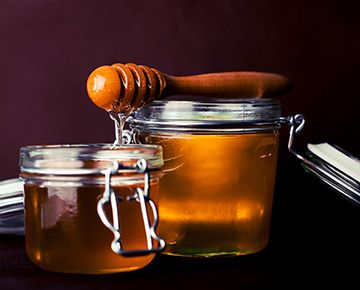
Mount Grappa’s honey
Mount Grappa’s honey
Variety: Acacia, Hill Multiflora, Chestnut, Mountain Multiflora.
Product Description: Specific aromatic and chromatic characteristics according to the different sources of flowering.
Acacia (from 150 to 5000 meters a.s.l.) light colored with yellow shade, it has a delicate and tasty aroma and a fine and gentle flavor typical of the Acacia flower.The Chestnut (from 400 to 600 meters a.s.l.) color varies from amber to dark brown, it has an intense and penetrating aroma and a full bodied and bitter flavor.
Mountain Multiflora (from 1000 to 1600 meters a.s.l.) color varies from yellow gold to brown and has an intense harmony of floral aromas.
Area and production: Foothills area and Montano del Grappa. Grappa's foothills are an ideal place for beekeeping thanks to the presence of a wide variety of botanical species and the chance to move the hives at different altitudes (from 100 to over 1,700 a.s.l.). The breeding and production method are organic and certified, thus enhancing the overall quality of the production area.
How to taste it: Perfect alone or spread on a slice of toasted bread with butter, with yogurt or milk, it matches very well with cheeses and Grappa’s oil and can also be used to bake. Worthy of note is Honey Grappa too, a delightful blend of two extraordinary local flavours.
-
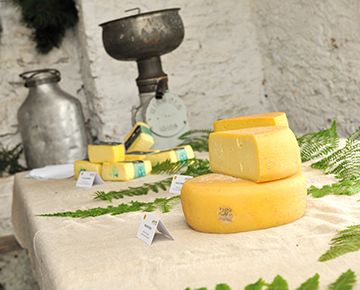
Morlacco and Bastard Cheese
Morlacco and Bastard Cheese
These are two dairy products that characterize Mount Grappa. They obtained the DOP Certificate (Protected Designation of Origin), as well as the inclusion in the listing of Slow Food.
Morlacco cheese: When fresh it has a crust that is barely perceptible; with ripening it gets more consistent with a vibrant color, from strawberry to orange. A marked scent, milky, acidic with herbaceous notes. The aroma and the taste are intense with aromatic hints. It is the typical cheese of Monte Grappa’s region. The name is believed to date back to the Morlacchi people, shepherds of Dalmatian origin who settled here around 1200 A.C.
Bastard Cheese: Authentic delicacy of ancient tradition, produced exclusively with first quality milk collected on the pastures of Monte Grappa. It has a striped crust, dry and clean, a firm dough, and becomes a bit granular when aged. The scent is pleasing, herbal, flowery with a scent of hay.
-
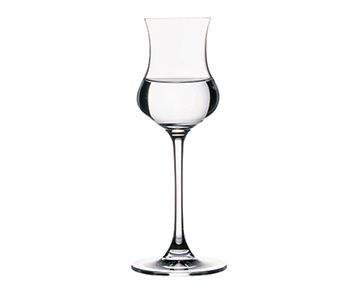
Grappa
Grappa
Grappa is a unique spirit, only found in Italy. Differently from all the other distillates, Grappa derives from a solid raw material: the peel of grapes separated from the must or wine. This, without a doubt, determines its character, technological history, difficulty in production, and therefore preciousness. It has a dry and intense, still very delicate taste. The final touch is given by a "taglio" (addition) with a single distillate, each time different depending on the production lot.
-

Prosecco
Prosecco
Superior Prosecco Wine of Conegliano and Valdobbiadene DOCG.
Variety of Superior Prosecco: Sparkling (Brut, Extra Dry and Dry) and Firm. Cru: Superior of Cartizze o Rive.
Product Description: Conegliano Valdobbiadene wine can be recognized for its vibrant elegance, light straw color, moderate texture, exclusive fruity and floral scent. Sparkling wine is produced in Brut, Extra Dry and Dry versions depending on the sugar residue present. The Brut is the driest, while the Dry is the most lovable. Cartizze is a cru, known mainly in the Dry version. It is a sparkling wine obtained from vineyards in an area of only 106 hectares, all of which are perched to the steepest hills of Valdobbiadene County. Cartizze is a sumptuous sparkling wine. From its color you can appreciate its great intensity, also manifested by a complex and pleasing mix of scents, from apple to pear, apricot to citrus, to rose, with a pleasant note of frosted almonds aftertaste. The taste is pleasantly round, with a soft flavor, and given vigor by the subtle perlage. The Rive, on the other hand, are the various Prosecco wines obtained from grapes of a single County, often from just a single fraction of it. The production of the Rive is reduced to 130 quintals per hectare, with the obligation to manual grape harvesting and the indication of the millesime characteristics. In the territory of Conegliano Valdobbiadene there are 43 different Rive that correspond to 43 local productions.
Produced in an area famous in Italy and around the world, the Conegliano Valdobbiadene DOCG wine is made on the steep hills that extend to the foot of the Prealpi Trevigiane Mountains.
Brief History: Wine has been produced in this area since the ancient times. Over the centuries, man has changed the environment in favor of the vineyards, thus giving origin to a unique landscape. Prosecco's birth is traditionally set in 1876, the year of the foundation in Conegliano of the first Italian winemaking school. In 1969 the local production was granted the DOC certification and in 2009 the DOCG, the highest qualitative recognition for Italian wines.
Particularly in its sparkling version, Prosecco can specially be appreciated as an aperitif. Here are some suggested combinations with food:
Sparkling Brut: along with appetizers made of fish and vegetables, main courses with seafood and baked fish dishes.
Extra Dry Sparkling Wine: legumes and seafood soups, pastas with meat sauces, fresh cheeses and white meats, especially poultry.
Dry sparkling wine and Cartizze: especially with dessert.
Asolo Prosecco Superiore DOCG
Product Description: This elegant Prosecco, produced in the small steep hills area enclosed between Monte Grappa and Piave - home to the DOC Montello and Colli Asolani wines - stands out thanks to the fine and persistent foam and the brilliant straw yellow color. The deep clay soils of Montello and Colli Asolani provide noble nourishment for the grapes, giving to Asolo Prosecco Superiore DOCG a structure and a body suitable for every meal, with the characteristic fruity scent and a surprising long-lasting taste.
Notes: DOC certificate of Montello and Colli Asolani includes 13 different white and red wines.
-
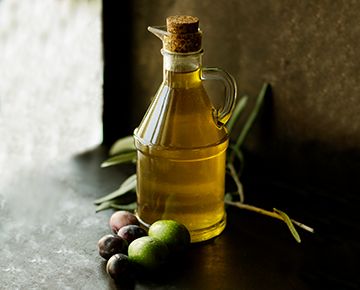
Extra virgin olive oil from the Treviso hills area
Extra virgin olive oil from the Treviso hills area
Variety of Oil: Mill, Leccino, Padanina.
Product description: Produced from small fruit. Rich in oleic acid, it has a delicate taste, slightly "spicy". The acidity does not exceed 0,2.
Area and production: Grappa foothills, Colli Trevigiani and Montello. Pruned and fertilized between February and March, no innovative cultivation methods or special treatments are used. Olives are still harvested by hand and the oil is extracted with traditional mechanical methods.
Brief History: We can find documents regarding olive oil crops and the production of oil in our area starting from 1236.
How to taste it: Thanks to its delicate flavour, it can be used on all foods but can also be tasted raw on a slice of bread.
-
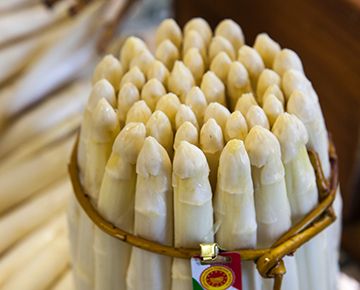
White Asparagus of Bassano DOP
White Asparagus of Bassano DOP
Product Description: White, 18 to 22 centimeters in length and a minimum diameter of 11 mm, well-formed, straight, full-bodied stems, full of tight, tender and non-woody appearance with a fresh smell. They are sold in bunches of 1 Kg or 1.5 Kg, all uniformed and tied with a willow straw called 'stroppa'.
Area and Production: Bassano del Grappa and neighboring Counties. Asparagus is a multiannual plant, which lives and produces for not more than a decade on average. The underground stem (rhizome) produces gems from which the stems grow, called shoots, which are the edible part of the product. These shoots grow underground in specially prepared soils, so that they can remain sheltered from sunlight and preserve their white color. They are harvested by hand, cutting them at the base with a special knife. This kind of asparagus is then chilled and preserved in water.
Brief History: There are many stories that tell about the origins of asparagus production. From Mesopotamia to the Roman Empire, from Sant'Antonio of Padua to the Sun King... The first documents that trace the valuable vegetable in this area date back to 1500 and the Venetian Republic. Thanks to its particular land and climate, Bassano country opted for the cultivation of this product. Since then, it has been specializing in the production of white asparagus. In November 2007, Bassano's Asparagus obtained the DOP certificate (Protected Designation of Origin), a European certificate that identifies local products exhibiting particular and inimitable qualities.
How to taste it: Especially used in Spring and during Easter. Paired with eggs as a classic match, it adds flavour to the most varied dishes, from starters to second courses.
-
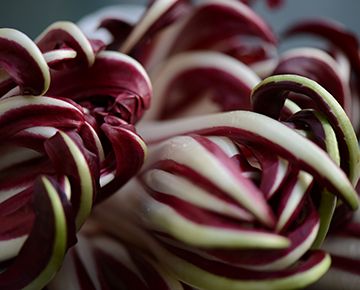
Radicchio
Radicchio
Treviso Red Variety IGP Early and Late, Variegato of Castelfranco Veneto IGP
Product Description: The Tardivo has an elongated shape, thin leaves with a white rib and a pleasant bitter and crispy flavor with violet/red leaf.
Precoce has broader leaves, long stretched and well-closed. Its flavour is slightly bitter and the texture is crisp.
Variegato, Red and Scarlet, born in the 1800s, has a round bush with white-cream leaves and shades of colours from purple and violet. The flavour goes from sweet to delicate bitter sweet.
Area and Production: Radicchio is cultivated in the Treviso area but can also be found in Venice and Padua. Precoce is the first to appear on the market, since the beginning of Autumn. Variegato arrives in October while the Tardivo is harvested in November, traditionally after the first cold weather. Once harvested, the Tardivo is not ready to be sold: it has to be processed with spring water by the expert hands of the producers to allow it to express, within a few weeks, all its beauty, crispness and unmistakable taste for the delight of the most refined palates.
How to taste It: Both cooked and raw, the three varieties can be used in a great number of dishes, from appetizers to risottos, from pasta to side dishes, to desserts.
-
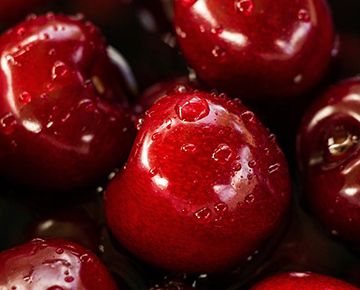
Cherries and Duroni
Cherries and Duroni
Variety: Marostica IGP Cherry, Maser Cherry
Product Description Round fruit, red and very firm pulp. The Duroni variety is more firm, bigger and darker, almost black and very sweet to taste. The cherries, instead, have lighter colour and smaller shape. They can be sweet or bitter, depending on the variety. The Marostica Cherry is the only one in Italy to have gained the IGP recognition.
Cultivation area Marostica and neighbouring counties in Vicenza area. Maser and Asolo hills in Treviso.
Brief History In the first half of the 1400 we can find the first documents that witness the production of cherry in the famous town of the chess game.
-
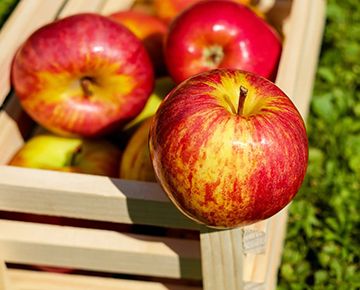
Apples of Monfumo
Apples of Monfumo
Variety: Golden Delicious, Royal Gala, Red Delicious
Product Description: Golden Delicious has a yellow-greenish skin and a slightly acidic taste. Royal Gala is bright red with crispy and juicy pulp. Red Delicious has an elongated shape, reddish colour, floury pulp and sweet-acid taste.
Area and Production: Monfumo. The product is cultivated on sunny, clay soil, following a pesticide-free crop program.
Short History: The first traces about the Apple of Monfumo dates back to the beginning of the twentieth century.
How to taste it: Some companies transform apples into cider, juice, grappa and jams.
-
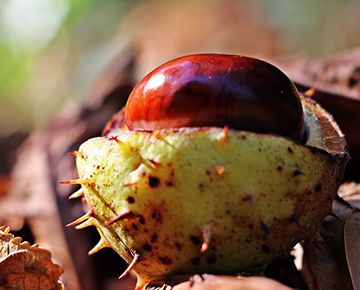
Chestnuts and Marroni
Chestnuts and Marroni
Variety of Marroni: Monfenera IGP, Grappa.
Variety of Chestnuts: Bonesi del Grappa, Rosso del Grappa.Product Description: Chestnut is a very nutritional food thanks to its high starch content, and its energetic, anti-anaemic, re-mineralizing and antiseptic properties.
Cultivation area: Grappa foothills and Asolo hills.
Brief History Chestnuts have been reported in the area since 1300. Specialized production is thought to have been introduced by the Republic of Venice.
How to taste it: Roasted on fire, baked or boiled; in the form of flour for bread, polenta and sweets.
-
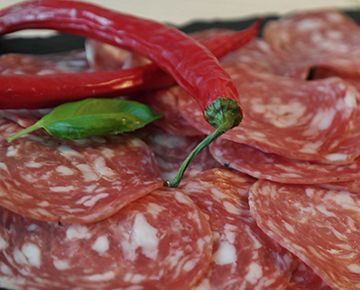
Sausages
Sausages
Soppressa Trevigiana
Product Description: Soppressa is a large sausage with variable dimensions due to the variability of the guts in which they are stuffed. The shape is curved, the diameter ranges from 10 to 20 cm, the weight swings from 1 to 7 Kg. Seasoning externally gives firstly the "white" color, then dark gray-brown from the mold that covers it. At the cut, the meat appears from red to pinkish, with the irregular white marbling given by the fat component that contains the protein part.
Area and production: Province of Treviso. It is produced with 70% lean meat, to which the fat part of the bacon is added along with salt, pepper, cumin, cloves and cinnamon. Some artisans and family producers add some Prosecco wine to the mixture or a Cabaret-like wine (1 litre per quintal of meat), to obtain a tastier paste. The meat is grinded to medium grain (6-8 mm) and the dough is sacked in a cow gut, taking the characteristic arch shape. The Sopressa are then punctured with a tool called "sponciarol", to release the air and liquids from the gut, to let it dry and mature. Seasoning must take place at a constant temperature, with a moisture level that must never exceed to avoid melding mold. Seasoning can last from five months to almost two years. The artisanal conservation is made in fresh, possibly dirt cellars. The low temperature allows the maturation of the sausages because the fat finds the conditions suitable for settling.
Brief History: The Soppressa, as well as musetto, salami and other sausages were packed in the Trevigian farm families by the local experts. After the slaughter of the pig, meat was prepared for various products. It was an occasion for intense community work but also for great celebration and abundance. Various documents testify that in 1800 these products were hung for 8-10 days in the kitchens in the presence of a burning brazier, in order to dry the fresh product. After this short period, they were placed in a basement or a fresh unpaved cupboard for conservation.
How to taste it: The Soppressa is a great sausage to eat raw sliced or grilled.
Other sausages typical of the Trevigian Area are Ossocollo, Cotechino or Musetto, Sausage or Luganega, Porchetta Trevigiana. In the Province of Vicenza we find Soppressa Vicentina DOP.

